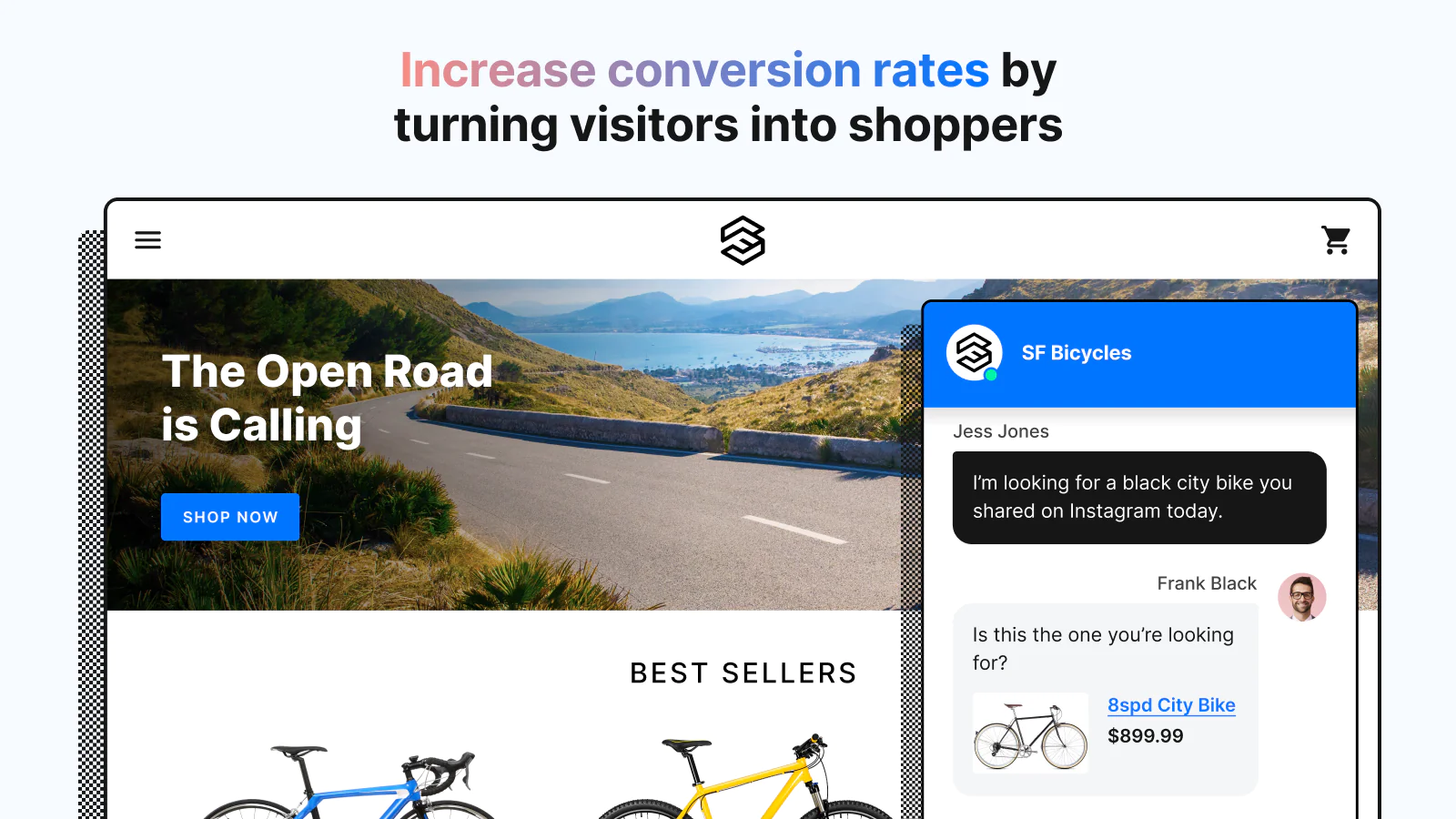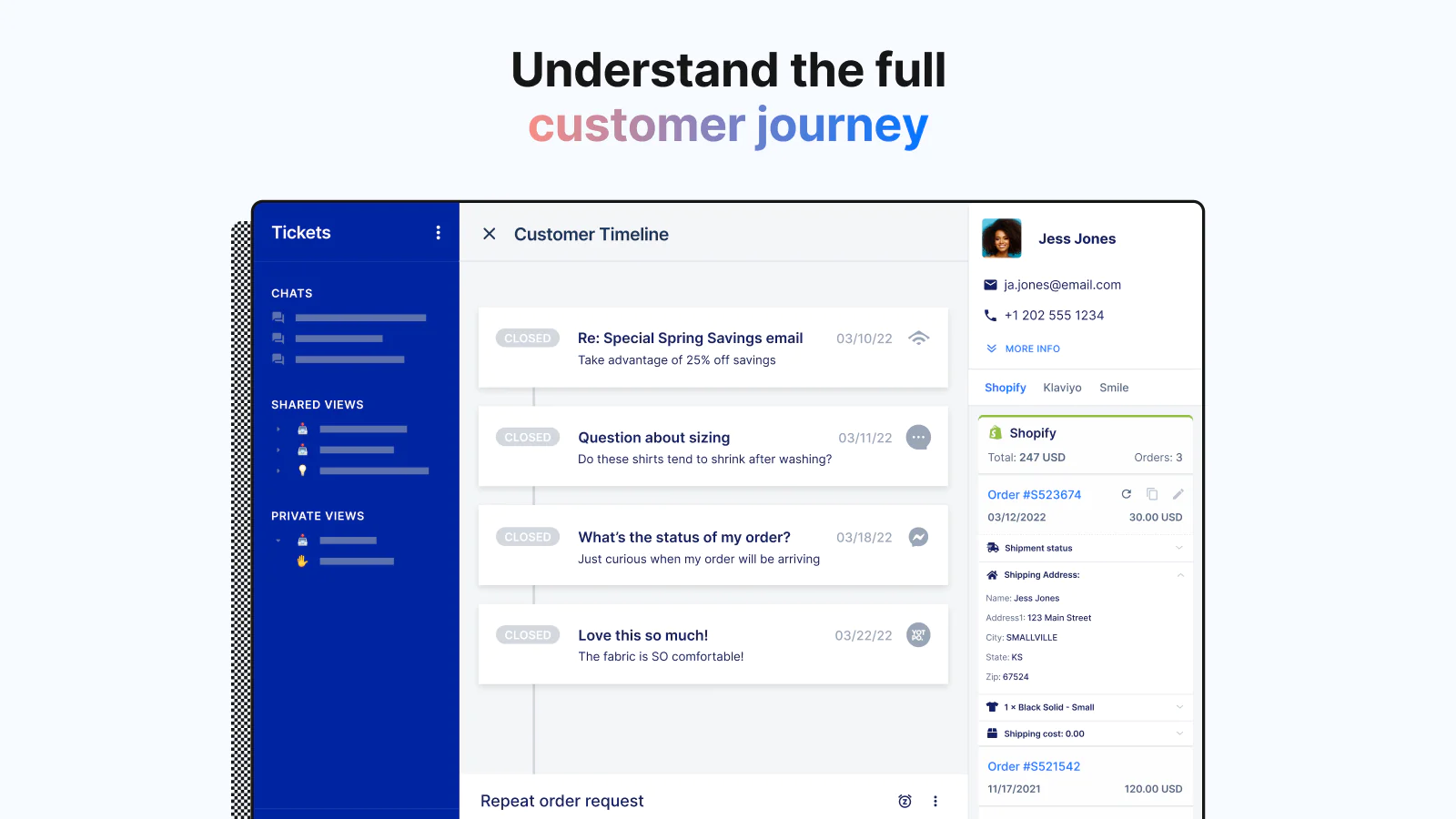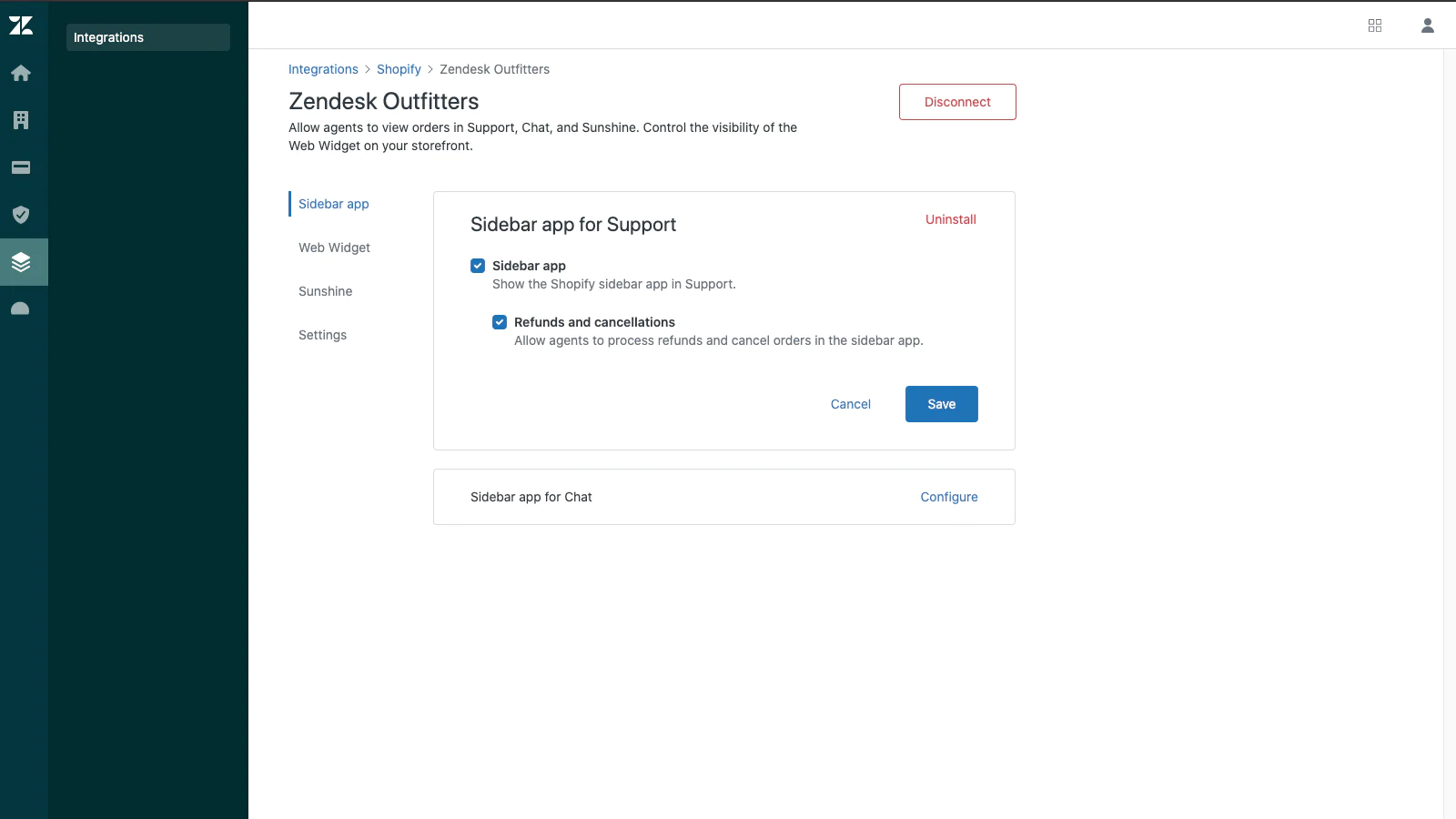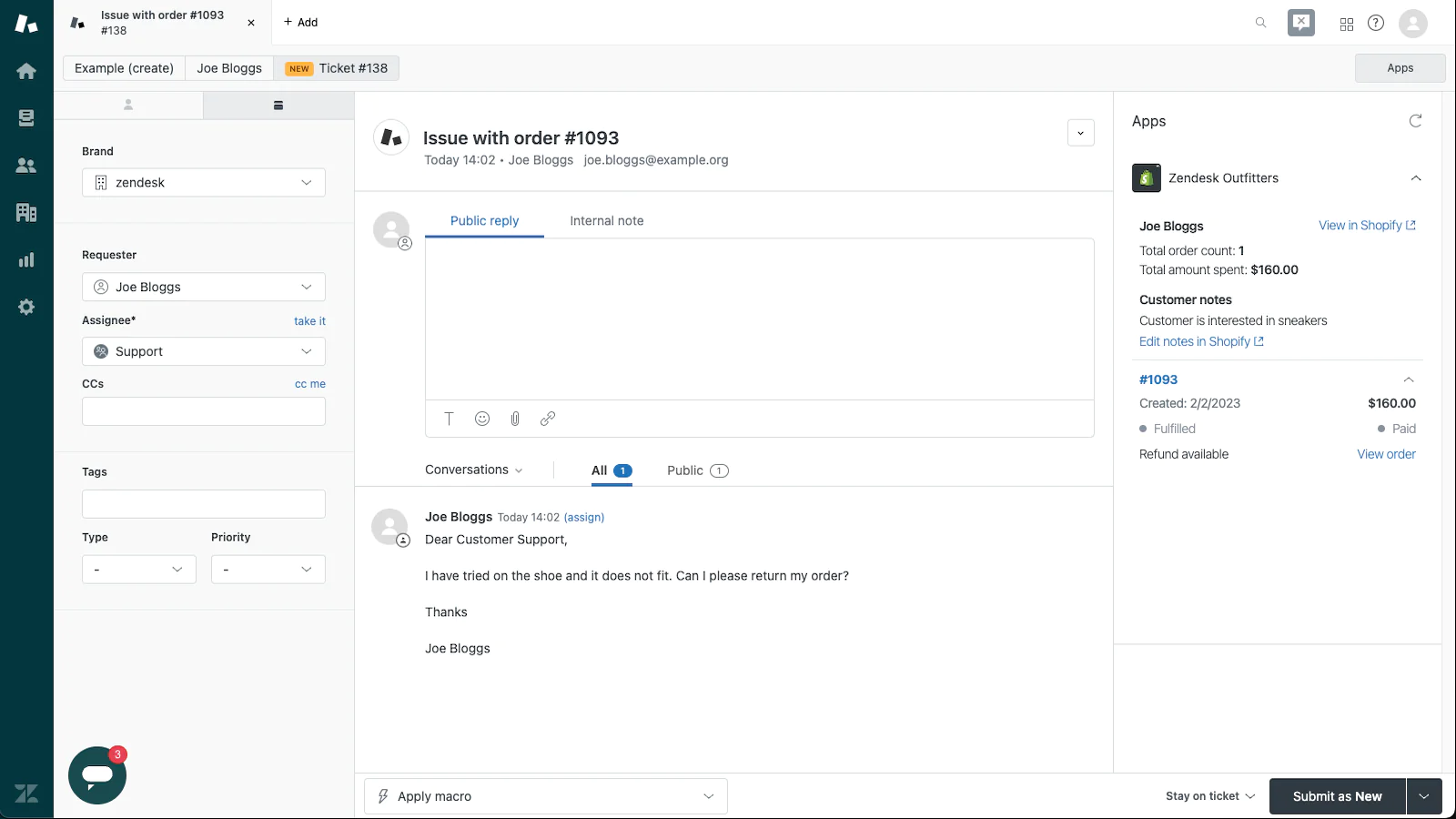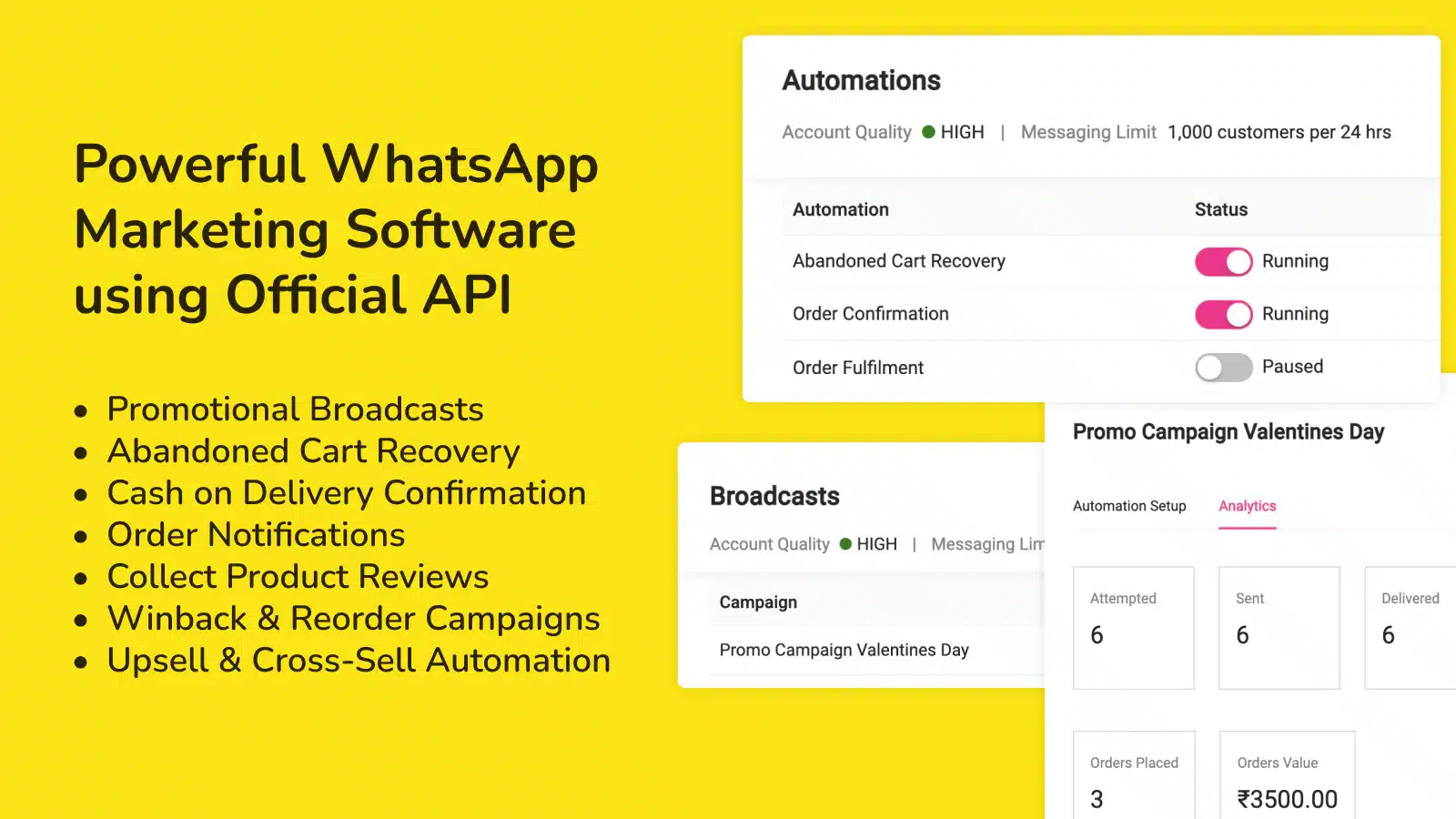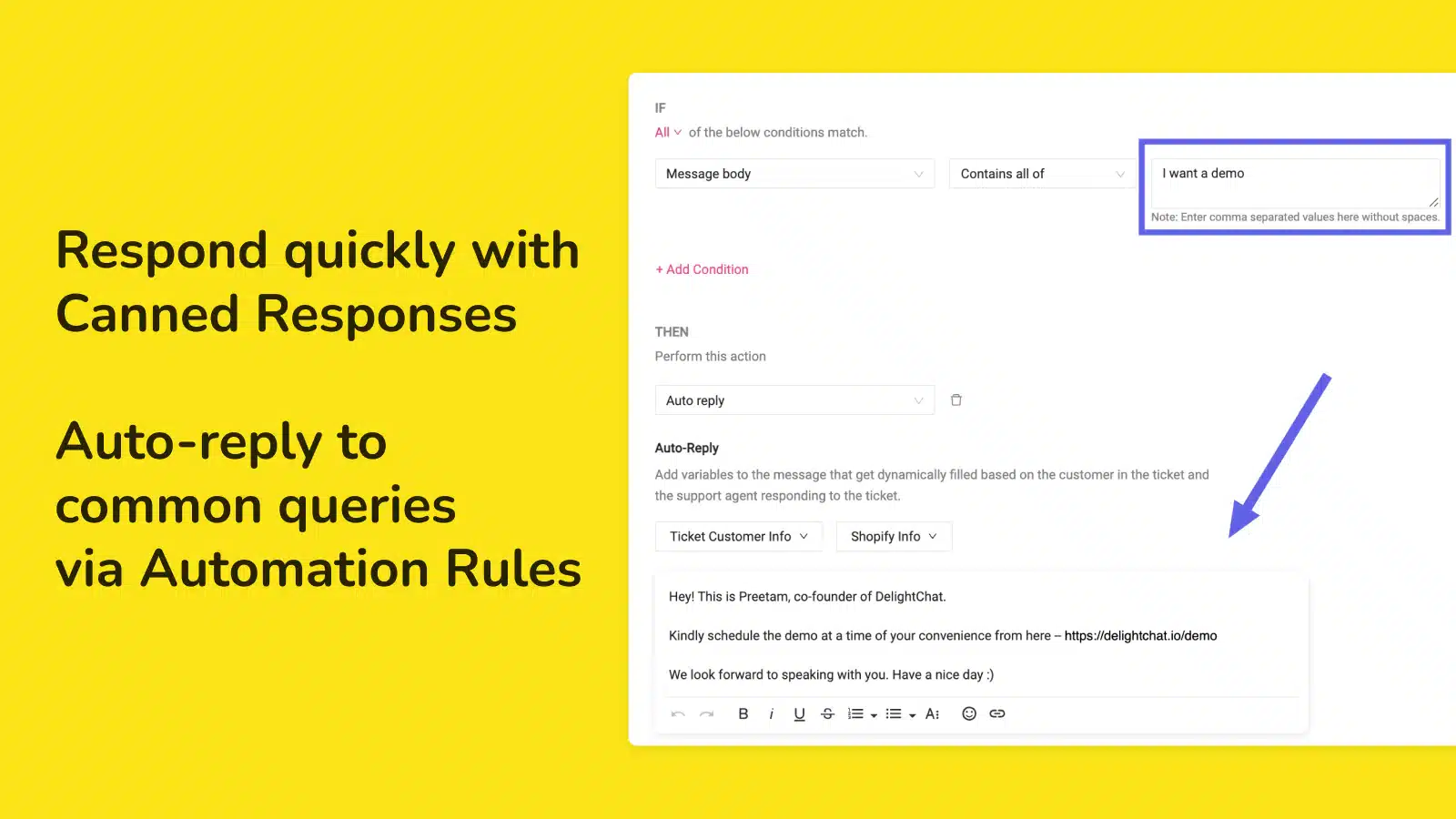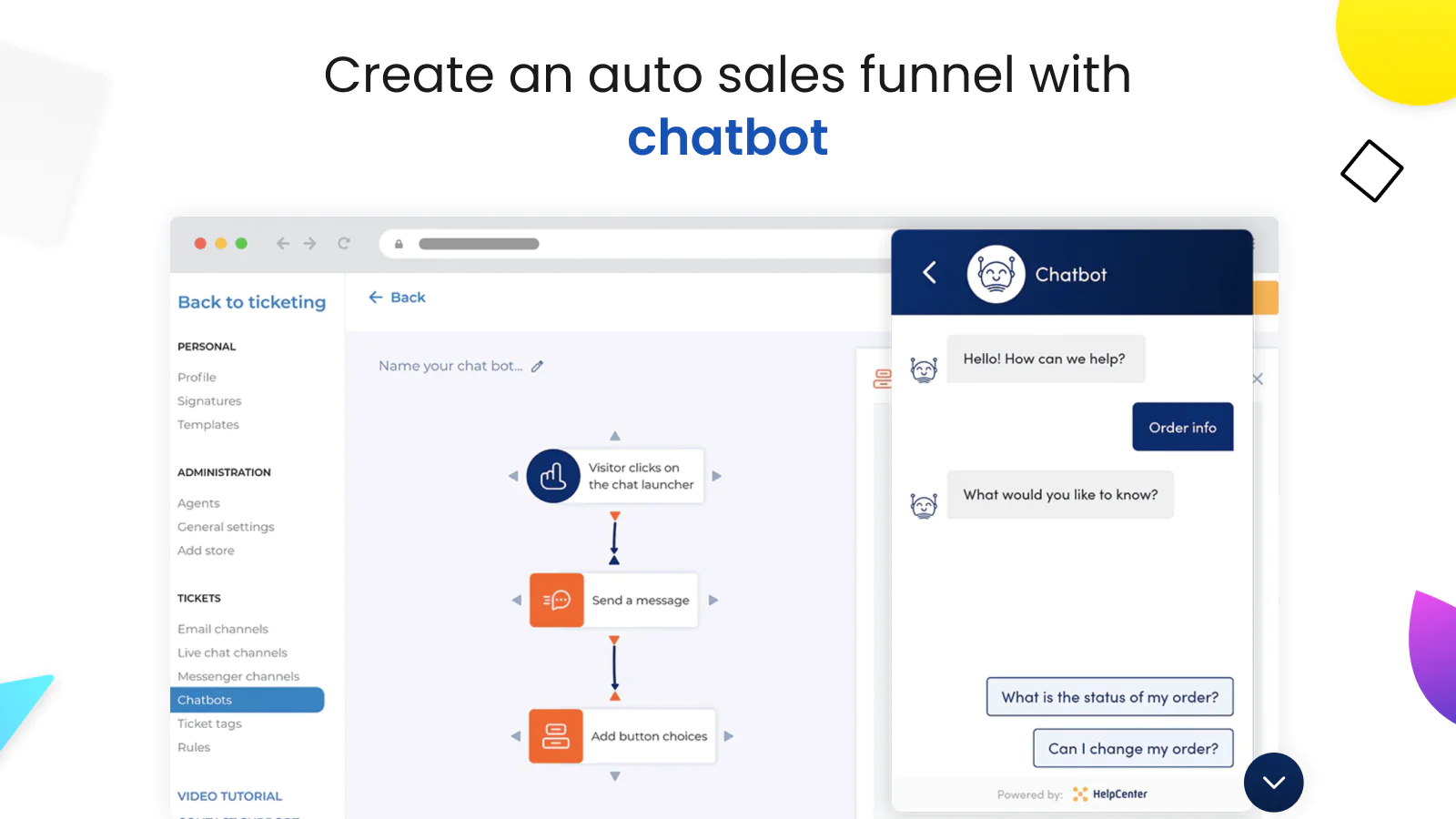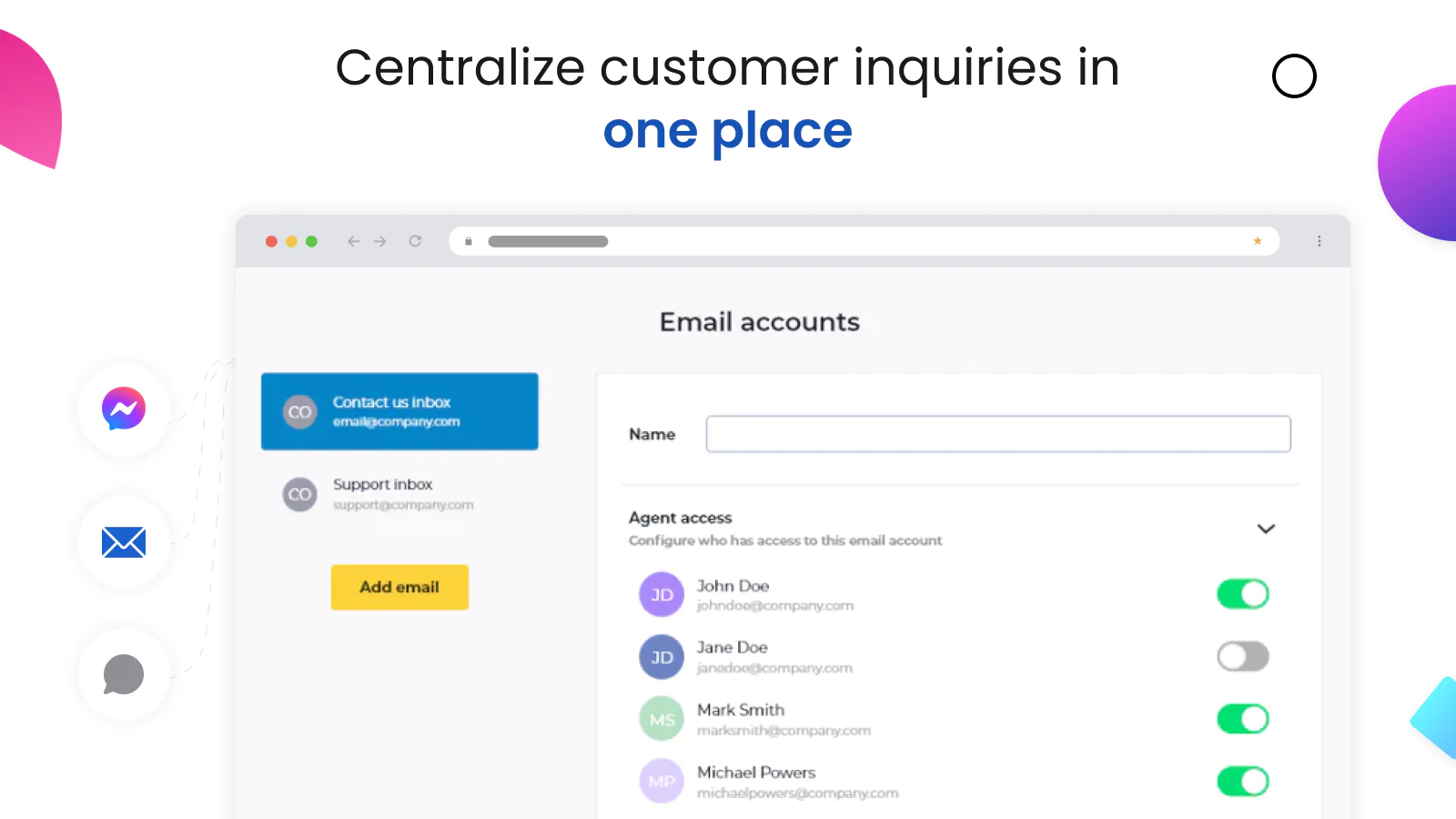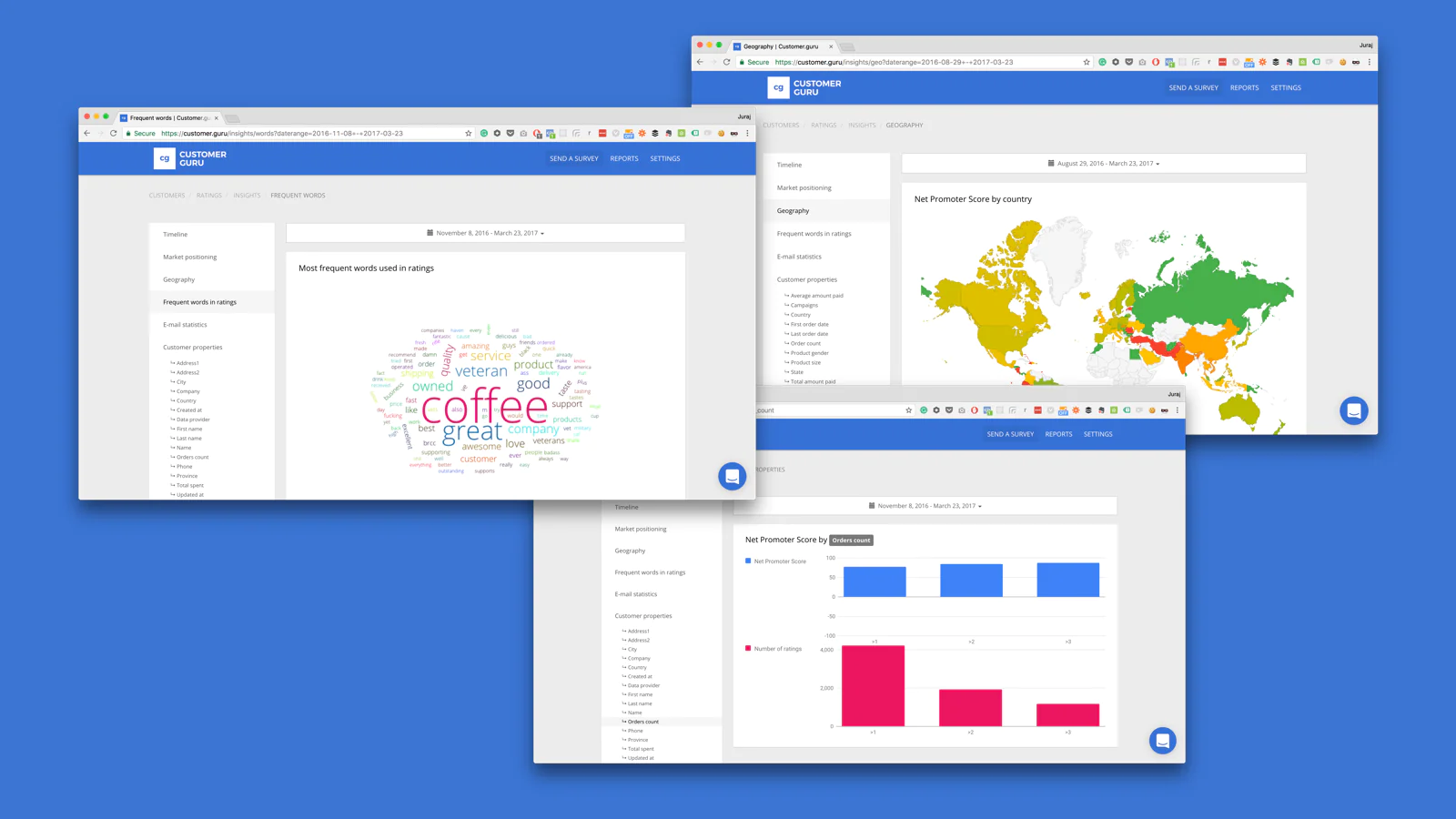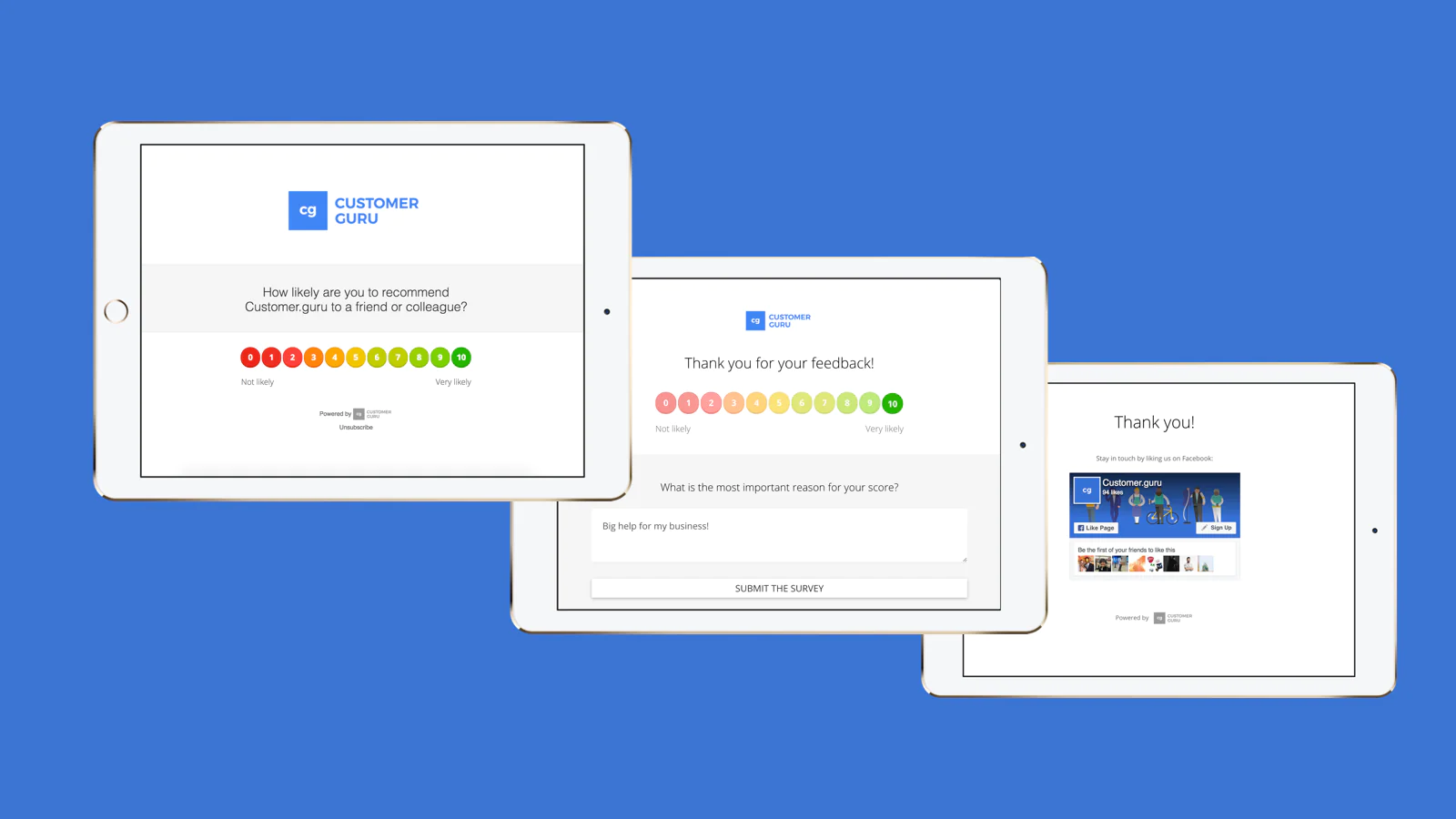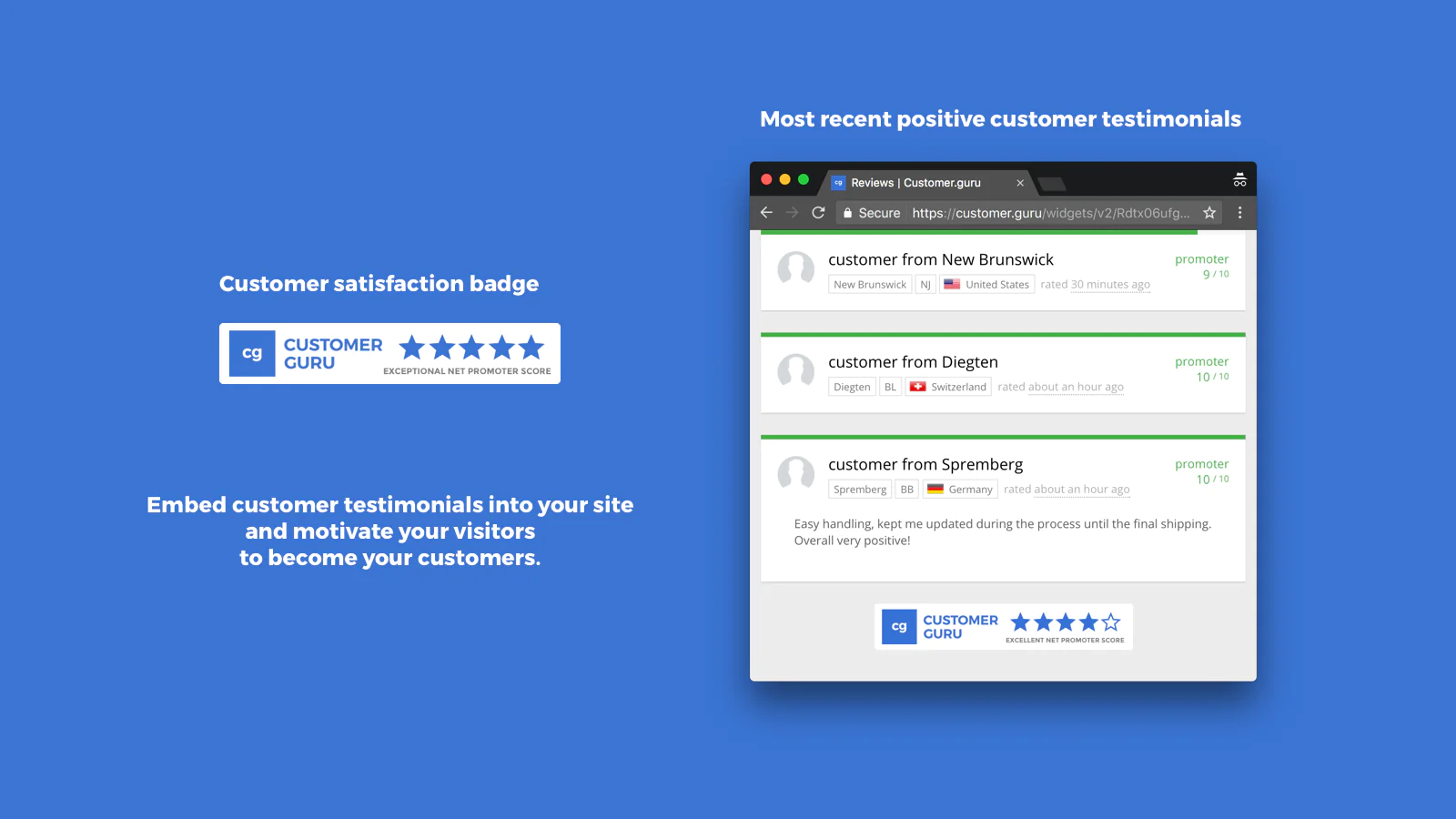Top 5 Shopify Customer Service Apps To Boost Sales [November, 2024]
This guide helps ecommerce store owners to compare and find the best customer service apps for Shopify. Customer service apps are popular for ecommerce businesses that want to provide the customer with a seamless shopping experience whether the customer is shopping online from a desktop or mobile device, by telephone or in a bricks and mortar store. However, with the variety of Shopify apps for customer service, it can be challenging to find the ideal app for store owners’ individual needs.
To help ecommerce store owners make the right choice, the attributes of available Shopify apps have been assessed considering: features, price, free trial availability, app store rating and free app options.
This guide compares five companies for merchants to review and find the optimal customer service app for their needs. To help them make an informed decision, a quick comparison table of the best customer service Shopify apps is shared below, followed by in-depth reviews and frequently asked questions.
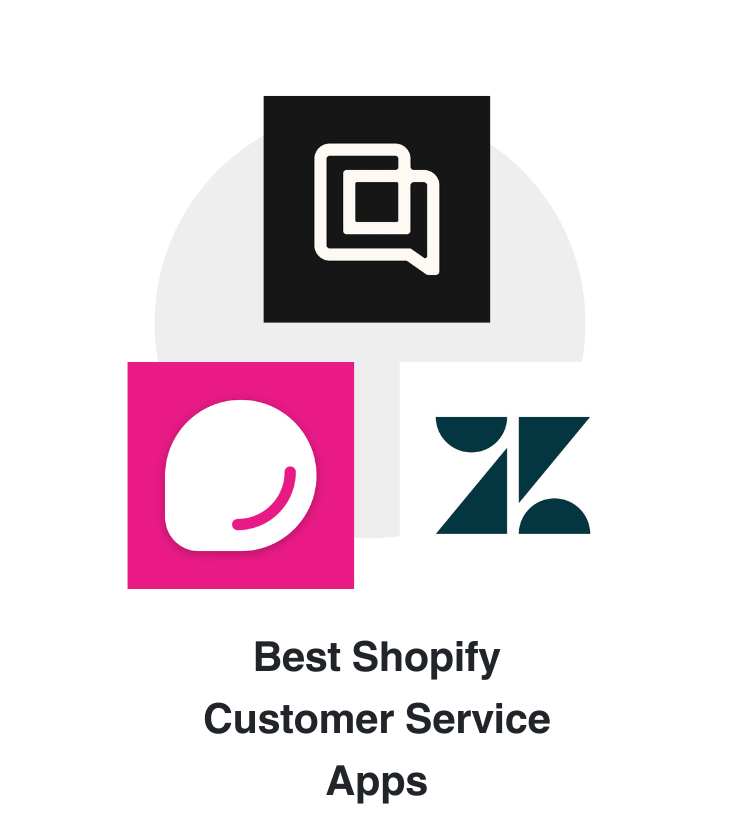

Free Guide: How To Find A Profitable Product To Sell Online
Excited about starting a business, but not sure where to start? This free, comprehensive guide will teach you how to find great, newly trending products with high sales potential.
Quick comparison of the best Shopify customer service apps
| # | App Name | Developer Name | Pricing | Rating | Free Trial | Image | Action |
|---|---|---|---|---|---|---|---|
| 1 | Gorgias ‑ Helpdesk & Live Chat | Gorgias Inc | $10/month | 4.5/5 ⭐️ | yes |  |
Get app |
| 2 | Zendesk | Zendesk | $55/month | 3/5 ⭐️ | yes |  |
Get app |
| 3 | WhatsApp Marketing + Helpdesk | DelightChat | $49/month | 4.6/5 ⭐️ | yes |  |
Get app |
| 4 | HelpCenter | FAQ Chat Helpdesk | Shark Byte, Inc | $8/month | 4.5/5 ⭐️ | yes |  |
Get app |
| 5 | Customer.guru Net Promoter NPS | Customer.guru | $50/month | 4.5/5 ⭐️ | no |  |
Get app |
Top Shopify customer service apps reviewed
Table of contents:
How to Find The Best Customer Service Shopify App?
These five customer service apps for Shopify are ranked based on the following criteria:
- Features
- Price
- Rating on the Shopify app store
- Free trial availability
- Free app options
- Compatibility with other top apps
- Number of apps the app provider operates
- Pros and cons
- Built for Shopify badge
- Reviews and assessment by AcquireConvert
What are Shopify customer service apps?
Shopify customer service apps are for merchants that need a solution that simply looks after chat inquiries from their website. Or do you want an app that integrates all the various channels from which a customer can buy products from you? Shopify abounds with individual customer service apps that will look after, for instance, service from your website or Facebook feed. But few offer a true omnichannel service that caters for customers from all the various touch points in your ecommerce business – and connects these points together to provide seamless consistency.
In fact, omnichannel apps have been practically non-existent until now. So, in this review, we look at a few of the best multichannel customer service apps for Shopify – and also an omnichannel app called Gorgias that breaks the mould. There are over 90 Shopify helpdesk apps and apps for simplifying and automating customer interactions on Shopify. We couldn’t consider them all. So above, we review just a few of the best options available to you for your Shopify store.
But first – a little more information about omnichannel and multichannel approaches to customer support.
What is an Omnichannel approach?
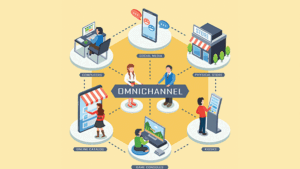
According to TechTarget, an omnichannel approach is one that “seeks to provide the customer with a seamless shopping experience whether the customer is shopping online from a desktop or mobile device, by telephone or in a bricks and mortar store.” Shopify simply calls omnichannel “the future of retail”. By definition, omnichannel looks after ALL the channels through which a customer may contact you and integrates them all. This creates more consistent and seamless customer experiences.
So, let’s break that down a little.
With omnichannel, consistent customer experiences are provided across the following channels:
- Web channel
- Mobile channel
- Company interest boards (like Pinterest)
- Company social media sites (Facebook etc)
- Custom content (like on YouTube)
- Digital media
- Direct marketing (emails etc.)
- Traditional media (newspapers, magazines)
- Loyalty programs
For larger organizations, it can also mean a consistent experience from call centres, franchisee relationships, and in property locations around the world (such as in-room messaging in hotels, etc.)
Omnichannel vs multichannel?

That new bag you bought? You probably first saw it in an ad or in a store? Then you searched it out on your smartphone for more details and to see if you could get a discount, maybe contacting the vendor? Then perhaps you looked it up on your PC for some larger images to check it’s really what you wanted – and asked a few questions on the live chat? Then you bought it.
In ecommerce, customers may now search for and research products in three or four different places before deciding to buy. As a store owner, how are you able to capture and integrate all that information to provide a consistent experience for customers? The answer is through omnichannel customer service.
The multichannel approach (which preceded omnichannel and which some stores persist with today) was essentially designed to bridge the gap for the customer between the offline and online worlds. With some businesses, that might simply mean providing quality service through more than one channel (i.e. two!); these channels themselves are not integrated with each other. Omnichannel is the next step up. It is already assumed that the gap between offline and online has been bridged: businesses now know that the offline and online experiences cannot be considered separate and unconnected. But omnichannel now connects together every single touchpoint that you have with potential customers.
You can provide great website service, solid social media service, and a great mobile experience – but unless they are all working together seamlessly, you’re still providing a multichannel experience.
The evolution of customer support
It is the integration and seamlessness of the customer experience that really defines omnichannel customer support – and its value cannot be under-estimated. Customer support has always evolved with technology. Once it was call centres; now live web-based chat is everywhere. With the technology now available to connect all customer touchpoint experiences together and provide total consistency in terms of service, it follows that the leading proponents of customer support are doing this already.
The availability of Twitter, Facebook, video chat, and live web chat together have revolutionized customer support, turning it into an essential marketing vehicle for those businesses that have fully embraced it. Some examples are included below.
Email support is not enough
Many stores are still relying on email for customer support. Essentially, email is reactive – not proactive. Therefore, while it still has its place, relying on it alone is not enough. You can replace those email chains that can take weeks to resolve and end up infuriating the customer. Live chat is the answer there. Live chat can help increase leads and conversions, as well as reduce the time it takes to resolve queries or complaints. It offers the benefits of real-time interaction with the customer.
Around 4-8 times the amount of leads can be generated for chat-optimized websites than for typical non-optimized sites that convert at 2 percent. This can result in significant revenue increases.
Businesses that are killing omnichannel
Following are a couple of examples of excellent use of omnichannel marketing and support. The first is an established brand, Chubbies, and is more from angle of marketing to its customer base.
But, just so you don’t think this is only for the biggest players, the second is a smaller ecommerce business killing it with customer support.
Chubbies

It’s not surprising to see Chubbies leading the way with omnichannel. The brand simply understands marketing – and its use of Instagram is a great example of this. One of the first things you notice about Chubbies is that, wherever you look them up, they have consistent messaging that talks directly to their target audience; user-generated content and humour plays a big role in their marketing.

Whether you like their shorts or not, you have to admire the consistency with which they hit the right notes across all the customer touchpoints, creating a seamless user experience.
Darn Good Yarn

Darn Good Yarn sells sustainable yarns and fabrics. Previously, its five customer support agents had to navigate between six different tools to locate the right customer information. You can imagine the delays.
When they started using an omnichannel customer service app for their Shopify store, agents were able to instantly access a unified view of each customer – including last orders, fulfilment status, and all other necessary info to answer customer queries in a timely manner. All team members can now see the same information, and the result is the customer is not left waiting for a resolution.
Which Shopify customer service app is right for you?
Space limitations don’t allow us to review the scores of other Shopify customer service apps, but the above five are among the most popular. They also provide a good overview of what’s available and should help you become clearer on the type of app you’re looking for, for your store. There is no doubt that the trend towards an omnichannel approach to customer service has major benefits. It has the potential to optimize the user experience, improving service, increasing retention, and attracting new customers.
In this respect, Gorgias is leading the way, and should be on the radar of most Shopify stores out there.
Conclusion: Best Shopify customer service apps
It requires time and effort to compare and evaluate features of the various different customer service Shopify apps to find the ideal option.
Shopify store owners must evaluate relevant information to make the optimal choice for their needs.
This guide does the challenging work for merchants by comparing and evaluating the top choices for different customer service Shopify apps. The results of our analysis of the best customer service Shopify apps are listed below:

